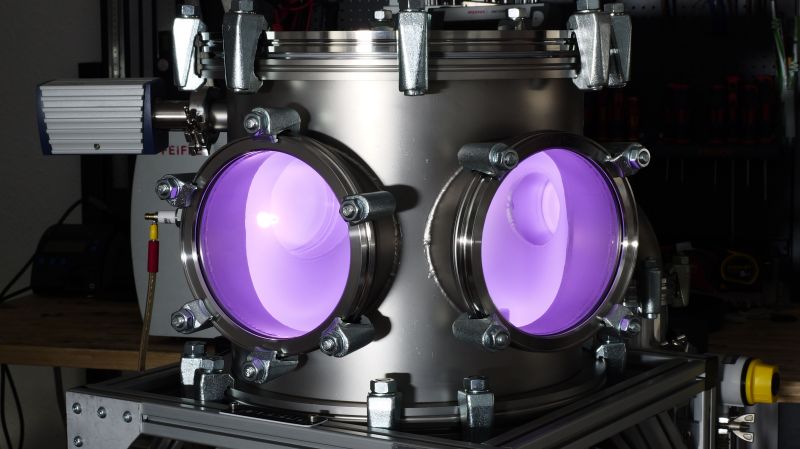Join us on Wednesday, March 6 at noon Pacific for the High Vacuum Hack Chat with Niklas from Advanced Tinkering!
To the casual observer, there’s not much that goes on in experimental physics that doesn’t require at least a partial vacuum. It makes sense when you think about it; our atmosphere is so thick and so loaded with water vapor and reactive oxygen that it just has to play havoc with experiments. Even when the goal is more applied than empirical, getting rid of all those pesky molecules is often the first step in getting good results.
But pulling a vacuum is rarely an easy task. Sure you can pump out some of the air, but that just makes the rest of the atmosphere try really hard to get back inside and ruin your day. It takes a lot of specialized equipment, a lot of precision-machined stainless steel fittings, and quite a bit of experience not only to pull a vacuum, but to then be able to work within it and do something useful.
 One place where we’ve seen a lot of high-vacuum action is over on Advanced Tinkering on YouTube. The channel has a wealth of interesting experiments, many of which need a good vacuum to get going. To that end, channel owner Niklas has assembled a nice collection of vacuum gear, and we asked him to drop by the Hack Chat to talk about what he’s learned by embracing the suck.
One place where we’ve seen a lot of high-vacuum action is over on Advanced Tinkering on YouTube. The channel has a wealth of interesting experiments, many of which need a good vacuum to get going. To that end, channel owner Niklas has assembled a nice collection of vacuum gear, and we asked him to drop by the Hack Chat to talk about what he’s learned by embracing the suck.
Our Hack Chats are live community events in the Hackaday.io Hack Chat group messaging. This week we’ll be sitting down on Wednesday, March 6 at 12:00 PM Pacific time. If time zones have you tied up, we have a handy time zone converter.
















I’m unlikely to make this one–having mouth bones scraped, x-rayed, probably drilled-and-filled, etc. “The Amateur Scientist” has a lot of older articles, many by John Stong, on vacuum processes and construction. Older but still valid for the crackpot working out of a home shop. I expect a fair number of amateur telescope makers here as vacuum-aluminizing of mirrors is pretty popular.
i run a small equipment company that builds sputtering/cvd/pecvd/etch/implant vacuum machinery for the usual suspects in industry
The YouTube link is pretty cool but I am a little concerned- the way the turbo is mounted on the reducing flange does not have enough/the correct type of fasteners on it to prevent the turbo from shearing and flying across the room if it fails catastrophically, something that has killed others in the past
Please keep an eye on your torque calcs
The Lesker Company also has a suite of free, on-line vacuum science and technology classes, https://www.lesker.com/lesker-u-live/ , and they do a lot of on-site training and workforce development for the semiconductor industry. Upcoming events include an introduction to residual gas analysis, and another on simple tests to preform to test the integrity of a vacuum system.